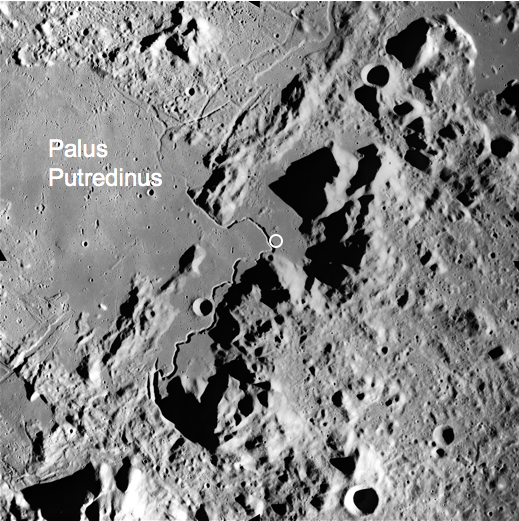
| Project Home | About the Scans | Browse Gallery | Image Map | Support Data | Resources | Ephemeris |
Featured Image - 11/14/2007
Hadley-Apennine: the Apollo 15 Landing Site
Man must explore...and this is exploration at its greatest!
Apollo 15 metric photograph depicting Hadley Rille, one of the youngest lava channels on the Moon (the sinuous feature near the center-left of the picture), the lunar Apennine Mountains, which form the southeastern rim of the Imbrium Basin (extending diagonally from the lower left to the upper right of the picture), and Palus Putredinus in the upper left. The Apollo 15 landing site (circled) was specifically selected because of its proximity to such a wide variety of interesting lunar geologic features. Astronauts David Scott and James Irwin explored this region for almost three days in July and August 1971. The new lunar roving vehicle enabled Scott and Irwin to drive a total of 28 km on the lunar surface during three extravehicular activities, collecting 77 kg of lunar samples in the process. One of the samples collected on this mission was the famous 4.15 billion-year-old Genesis Rock, Apollo lunar sample 15415, which is thought to represent a sample of the Moon's original crust. Other notable science results from Apollo 15 include the dating of the formation of the Imbrium Basin (~3.85 billion years ago), the sampling of nearly pristine materials from the lunar mantle (the green glass spherules), and the discovery that the mare basalts collected on this mission formed 3.3 billion years ago--approximately 500 million years after the formation of the mare basalts collected at the Apollo 11 site.
(Apollo Image AS15-M-0414 [NASA/JSC/Arizona State University])

|
|
Space Exploration Resources |
|
 LPI LPI
|
